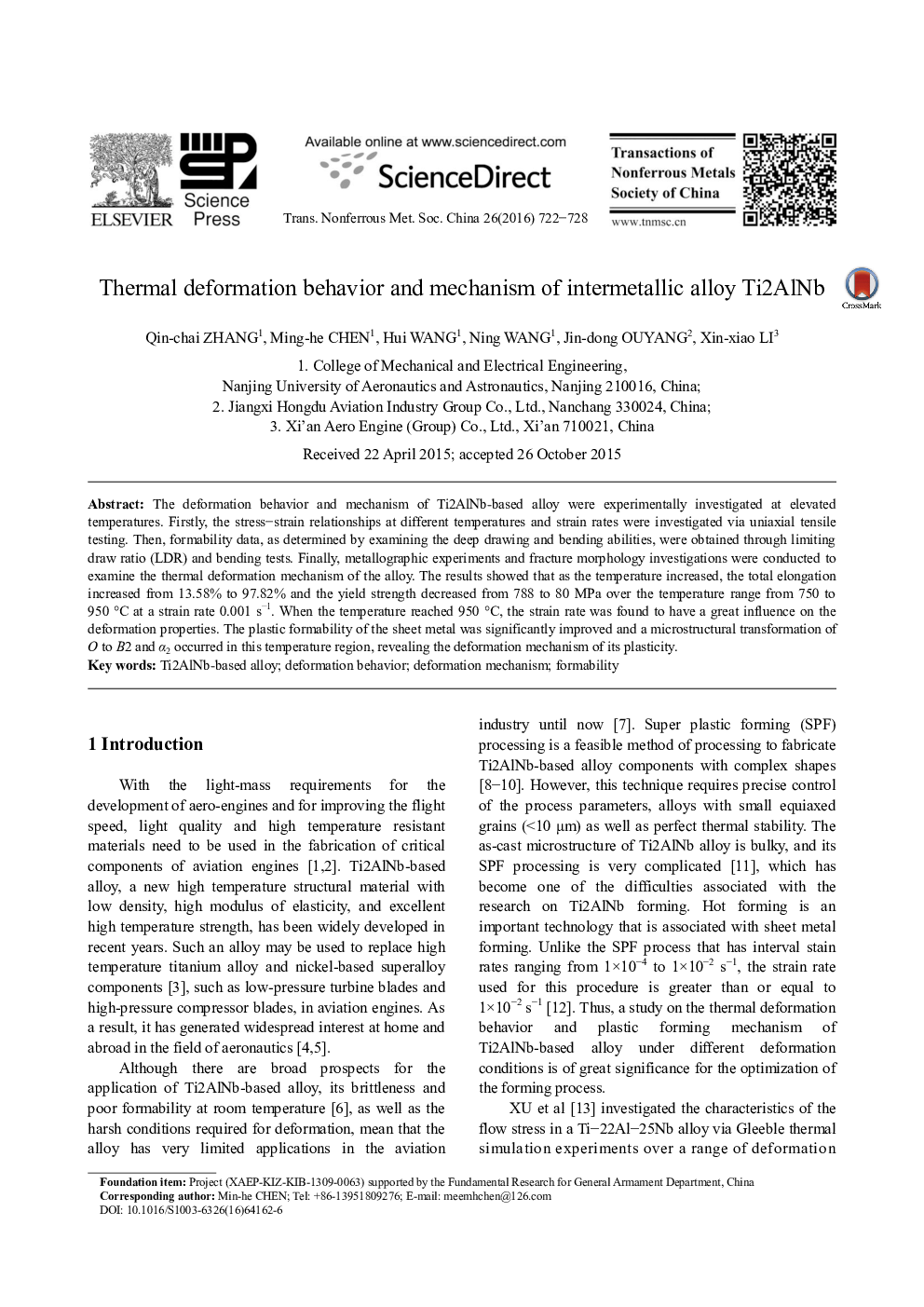| Article ID | Journal | Published Year | Pages | File Type |
|---|---|---|---|---|
| 1635748 | Transactions of Nonferrous Metals Society of China | 2016 | 7 Pages |
Abstract
The deformation behavior and mechanism of Ti2AlNb-based alloy were experimentally investigated at elevated temperatures. Firstly, the stress-strain relationships at different temperatures and strain rates were investigated via uniaxial tensile testing. Then, formability data, as determined by examining the deep drawing and bending abilities, were obtained through limiting draw ratio (LDR) and bending tests. Finally, metallographic experiments and fracture morphology investigations were conducted to examine the thermal deformation mechanism of the alloy. The results showed that as the temperature increased, the total elongation increased from 13.58% to 97.82% and the yield strength decreased from 788 to 80 MPa over the temperature range from 750 to 950 °C at a strain rate 0.001 sâ1. When the temperature reached 950 °C, the strain rate was found to have a great influence on the deformation properties. The plastic formability of the sheet metal was significantly improved and a microstructural transformation of O to B2 and α2 occurred in this temperature region, revealing the deformation mechanism of its plasticity.
Related Topics
Physical Sciences and Engineering
Materials Science
Metals and Alloys
Authors
Qin-chai ZHANG, Ming-he CHEN, Hui WANG, Ning WANG, Jin-dong OUYANG, Xin-xiao LI,
